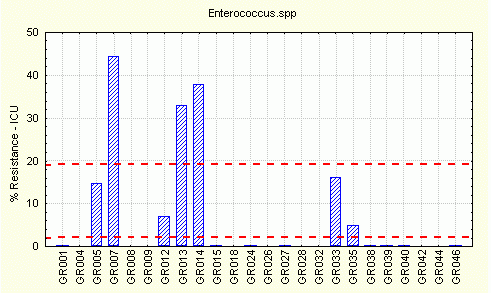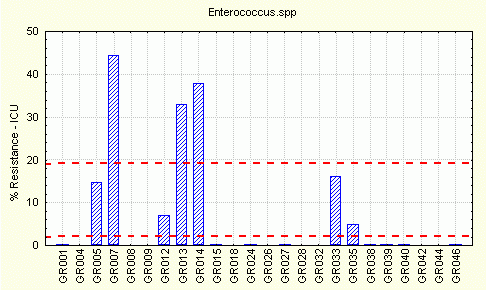
Enterococci
% resistant to vancomycin
Basic statistics
(January-June 2001)

Enterococci
% resistant to vancomycin
Basic statistics
(January-June 2001)
TABLE 1. Clusters of the hospitals based on resistance
of enterococci to vancomycin
|
A. ALL WARDS
|
||
|
Cluster
|
Mean % Resistance ±
SD
|
Hospital
|
|
"Low Resistance"
|
2% ± 2%
|
GR001, GR004, GR005, GR007, GR009, GR012, GR013, GR014,
GR015, GR018, GR024, GR027, GR028, GR032, GR033, GR035, GR038, GR039,
GR040, GR042, GR046
|
|
"High Resistance"
|
26% ± 11%
|
GR026, GR044
|
| B. ICU | ||
|
Cluster
|
Mean % Resistance ±
SD
|
Hospital
|
|
"Low Resistance"
|
4% ± 6%
|
GR001, GR005, GR012, GR015, GR024, GR027, GR033, GR035,
GR038, GR039, GR040, GR046
|
|
"High Resistance"
|
38% ± 6%
|
GR007, GR013, GR014
|
Figure 1. Multi resistance by hospital.
Dot lines represents 95% CI of the overall mean
resistance to vancomycin
A. All WARDS

B. ICU

|
Specific comments. The applied methodology of clustering the
hospital wards and ICUs using the calculated multi-resistance is similar
to the analysis of variance (ANOVA) "in reverse." In particular,
we started with k random clusters, and then move cases (i.e. hospitals)
between those clusters with the goal to:
|